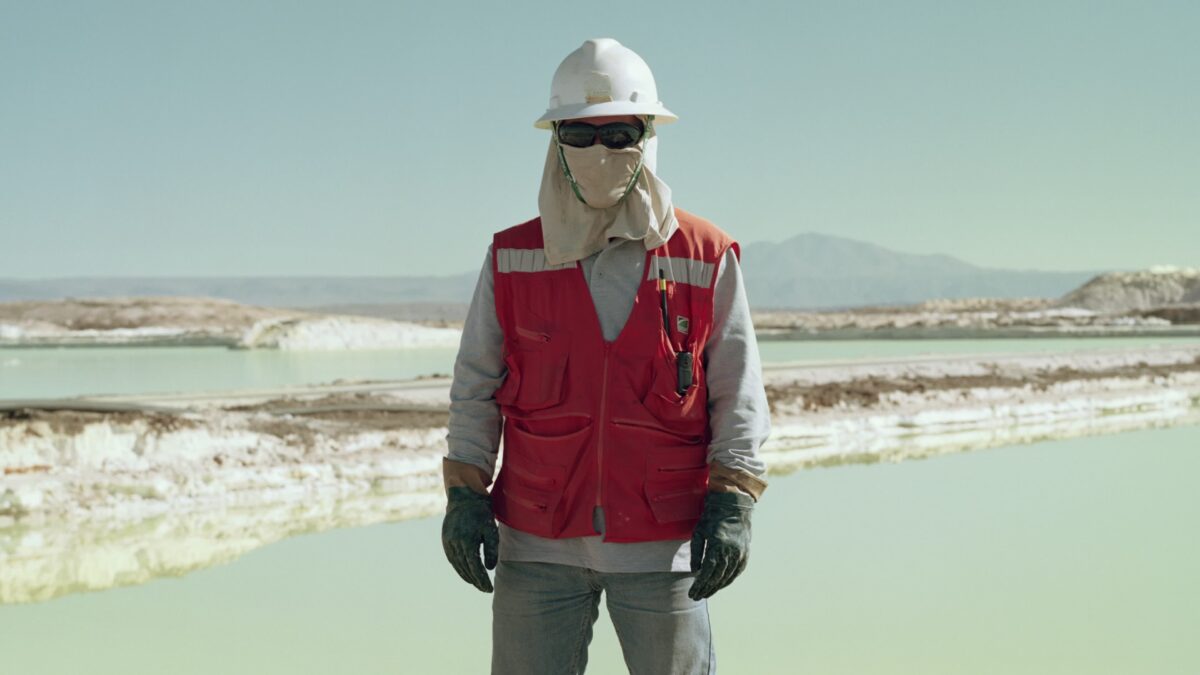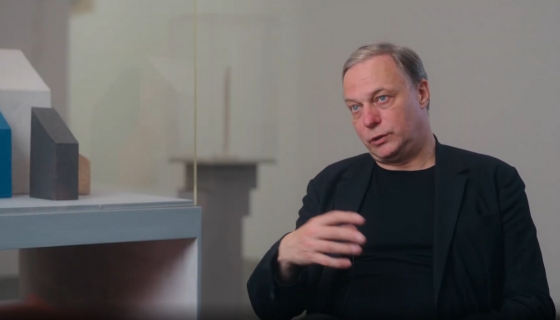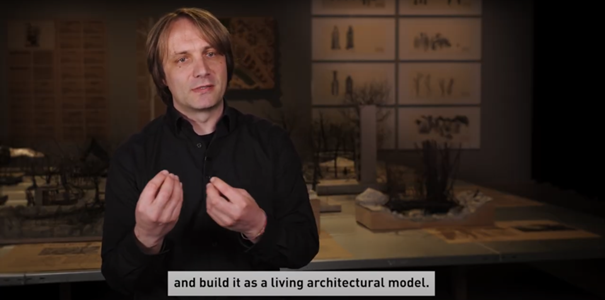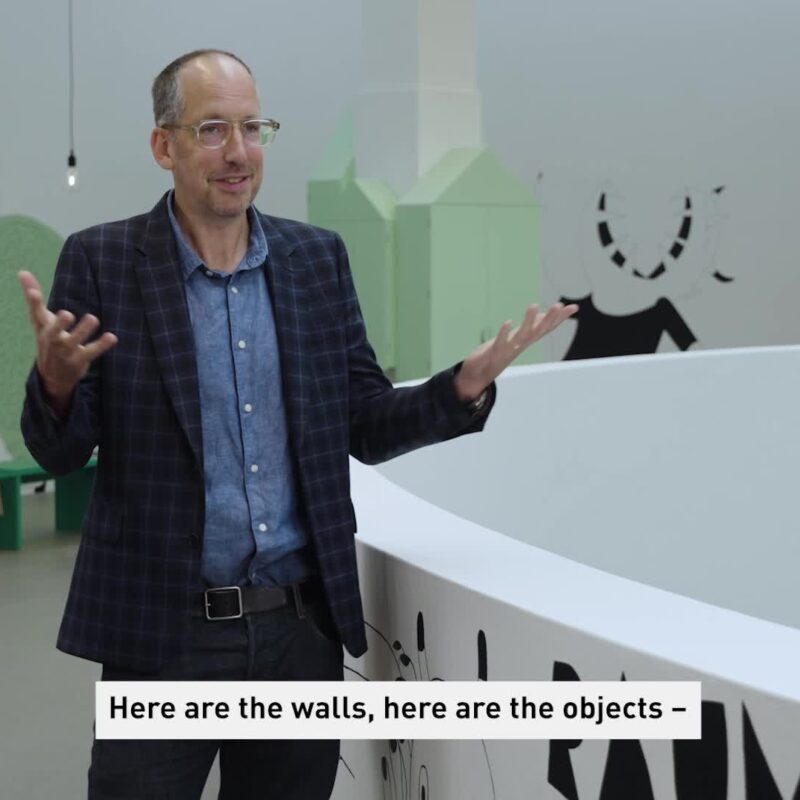
ONE ON ONE
Activate YouTube content
Please note:
With activating cookies, they are stored on your device and a connection to the USA is established. The USA is not a safe third country within the meaning of EU data protection law. With your consent, you also consent to the processing of your data in the USA. Further information can be found in our privacy policy.

Lithium Mining, Critical Resources, and the Material Side of the Cloud
In the latest episode of our ONE ON ONE series, curator Damjan Kokalevski discusses the photo series "Lithium Mining in the Atacama Desert" (2018) by British artist Catherine Hyland – a key work in the Critical Resources section of the exhibition City in the Cloud. Data on the Ground at the Architekturmuseum of TUM.
Lithium Mining in the Atacama: Transforming the Landscape
Hyland’s striking images take us to one of the world’s most important lithium mining regions: the Salar de Atacama in Chile. Here, roughly 79 percent of the EU’s lithium supply is produced – the very resource on which much of our digital infrastructure depends. While the cloud is often imagined as an immaterial, floating network, these photographs reveal it as deeply rooted in earthly and finite materials.
In massive evaporation ponds, up to 2.2 million liters of water per ton of lithium are pumped from underground brine and exposed to the desert sun. The resulting surreal colors of green and yellow mark a drastic transformation of one of the driest regions on Earth.
Hyland captures these landscapes not from drone or aerial perspectives, but from human eye level, highlighting the ecological and social dimensions of mining: dried-up riverbeds, abandoned settlements, and traces of indigenous communities such as the Atacameño, whose livelihoods are increasingly threatened.
The Cloud as Physical Infrastructure
Now is the time to acknowledge that all of this infrastructure has a limit and that we need to work within these limits. But we also need to set the limits ourselves
The digital cloud may seem infinite, but it relies on finite resources. The Critical Resources section makes clear that digital technologies cannot grow endlessly when their material base is limited.
The exhibition asks: How can we envision digital futures that operate within planetary boundaries?
Hyland’s series offers a visual guide through the lithium mining landscapes, illustrating the global “green energy transition” while revealing the local environmental and social costs.
About the artist
Catherine Hyland is an artist living and working in London. She holds a bachelor’s degree from Chelsea College of Art and Design and a master’s degree from the Royal College of Art. Her photography centers on people and their connection to the land they inhabit. Her ongoing projects highlight humanity’s attempts — some more effective than others — to tame and transform nature, past and present.










